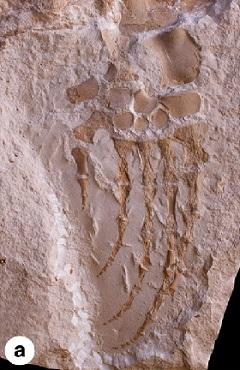Using AI to control energy for indoor agriculture
30 September 2024
Published online 7 October 2013

Mosasaurs are a group of extinct reptiles that were the dominant predators in the seas of the Late Cretaceous period (98–66 million years ago) and were first discovered by Dutch quarry workers in 1764. There is an ongoing debate about how these reptiles moved through water. A new study in Nature Communications shows that some mosasaurs did not move like sea snakes, ambushing their prey as once thought, but were fast swimmers similar to sharks.
In 2008, Hani Kaddumi of Jordan's Eternal River Museum of Natural History discovered a well-preserved mosasaur fossil in the deserts of Harrana near Amman. Three years later Johan Lindgren of Lund University in Sweden discovered impressions of soft tissues in the fossil. The duo teamed up with Michael Polcyn of the Southern Methodist University in Dallas, Texas, to figure out how these creatures once moved.
The fossil includes an impression of a two-lobed, streamlined tail fin with a larger lower lobe, like an upside-down version of a modern shark's tail. Together with an analysis of the skeletal anatomy, this suggests that the specimen used its tail for thrust in a manner similar to modern sharks, a remarkable example of convergent evolution in the face of similar constraints.
"Our findings suggest that Upper Cretaceous ecosystems were not too different from those of today," said Lindgren. "Instead of toothed whales and large sharks, you had mosasaurs."
doi:10.1038/nmiddleeast.2013.172
Stay connected: